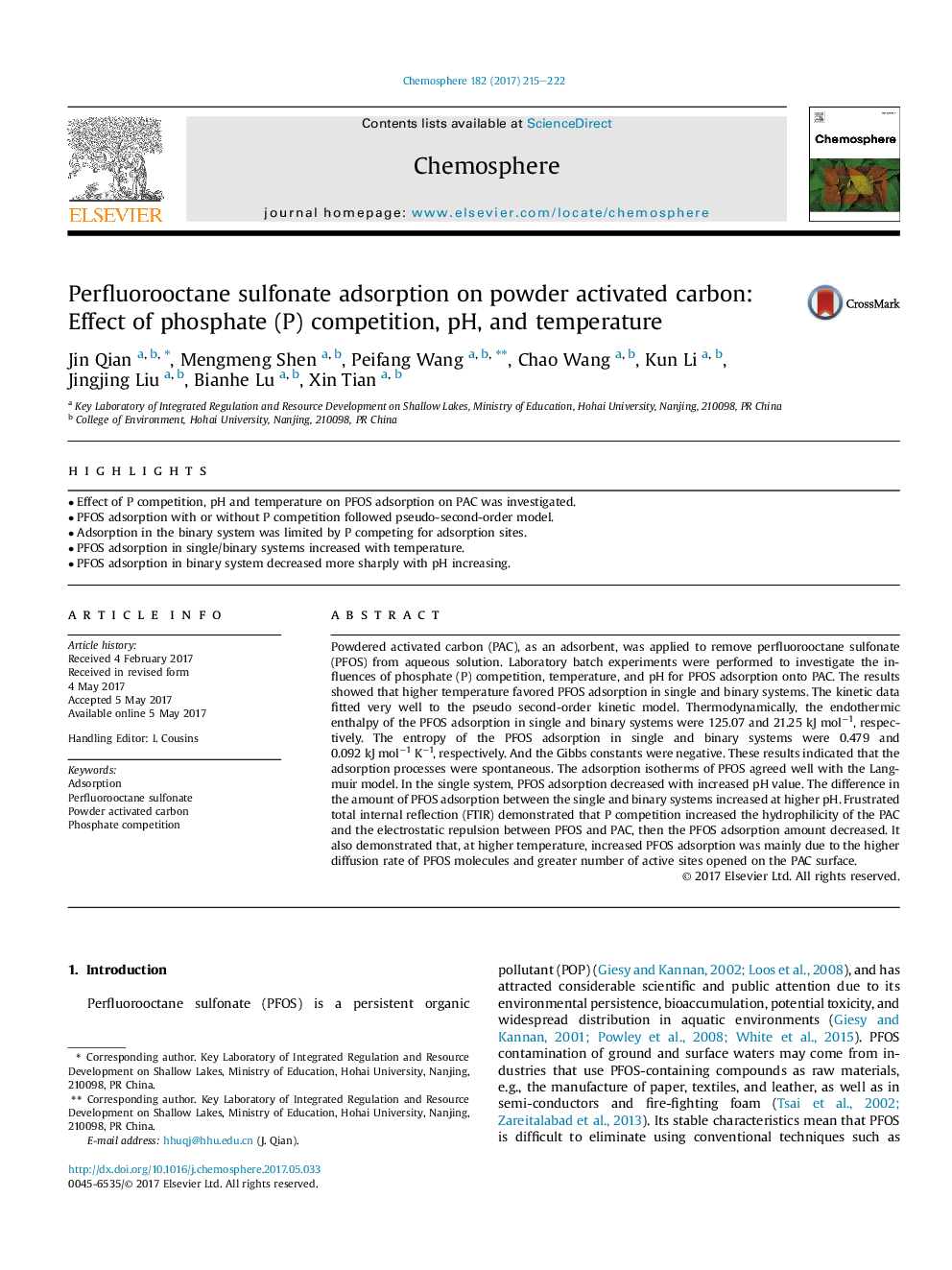| کد مقاله | کد نشریه | سال انتشار | مقاله انگلیسی | نسخه تمام متن |
|---|---|---|---|---|
| 5746879 | 1618789 | 2017 | 8 صفحه PDF | دانلود رایگان |

- Effect of P competition, pH and temperature on PFOS adsorption on PAC was investigated.
- PFOS adsorption with or without P competition followed pseudo-second-order model.
- Adsorption in the binary system was limited by P competing for adsorption sites.
- PFOS adsorption in single/binary systems increased with temperature.
- PFOS adsorption in binary system decreased more sharply with pH increasing.
Powdered activated carbon (PAC), as an adsorbent, was applied to remove perfluorooctane sulfonate (PFOS) from aqueous solution. Laboratory batch experiments were performed to investigate the influences of phosphate (P) competition, temperature, and pH for PFOS adsorption onto PAC. The results showed that higher temperature favored PFOS adsorption in single and binary systems. The kinetic data fitted very well to the pseudo second-order kinetic model. Thermodynamically, the endothermic enthalpy of the PFOS adsorption in single and binary systems were 125.07 and 21.25Â kJÂ molâ1, respectively. The entropy of the PFOS adsorption in single and binary systems were 0.479 and 0.092Â kJÂ molâ1Â Kâ1, respectively. And the Gibbs constants were negative. These results indicated that the adsorption processes were spontaneous. The adsorption isotherms of PFOS agreed well with the Langmuir model. In the single system, PFOS adsorption decreased with increased pH value. The difference in the amount of PFOS adsorption between the single and binary systems increased at higher pH. Frustrated total internal reflection (FTIR) demonstrated that P competition increased the hydrophilicity of the PAC and the electrostatic repulsion between PFOS and PAC, then the PFOS adsorption amount decreased. It also demonstrated that, at higher temperature, increased PFOS adsorption was mainly due to the higher diffusion rate of PFOS molecules and greater number of active sites opened on the PAC surface.
Journal: Chemosphere - Volume 182, September 2017, Pages 215-222